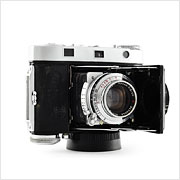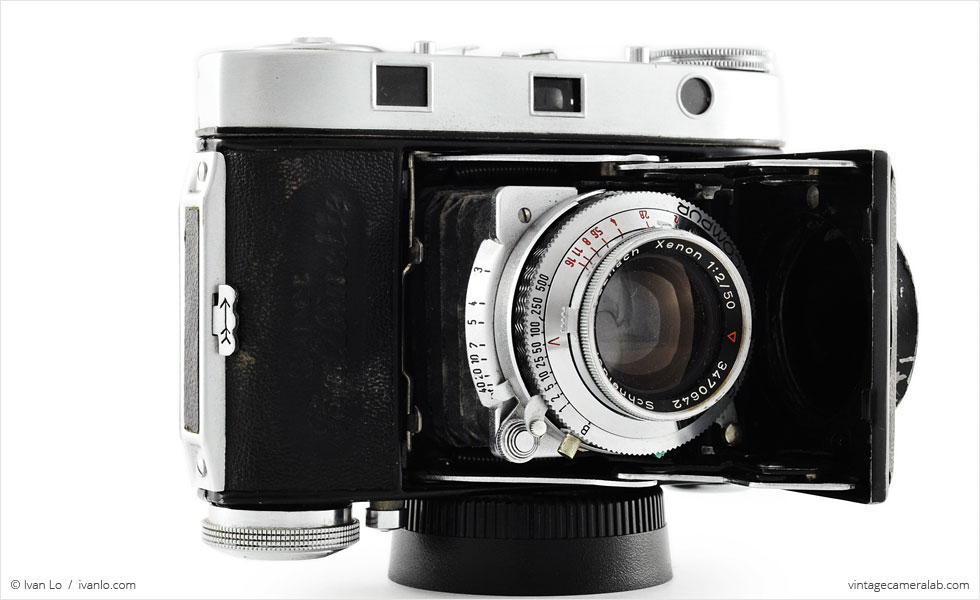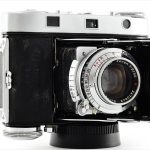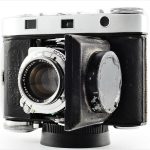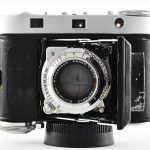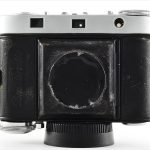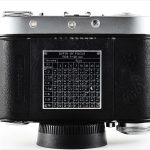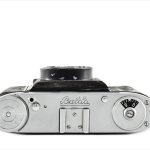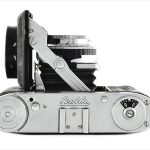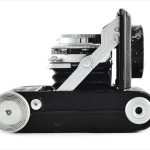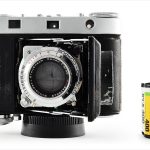Balda Super Baldinette Specifications
| Manufacturer: | Balda Kamera-Werk |
| Origin: | West Germany |
| (modern day Germany) | |
| Made in: | West Germany |
| (modern day Germany) | |
| Introduced: | 1951 |
| Type: | Folding, Rangefinder |
| Format: | 135 Film |
| Dimensions: | 12 x 9.3 x 4.6 cm (closed) |
| 12 x 9.3 x 8.6 cm (open) |
Balda Super Baldinette Overview
The Balda Super Baldinette is a folding rangefinder and became Balda’s flagship camera in the early 1950s. Shortly after World War II, Balda moved from the eastern city of Dresden to B ünde in West Germany where founder Max Baldeweg opened a new factory and began manufacturing modified versions of existing models. Along with the Super Baldinette, there is also a “normal” Baldinette which has no rangefinder assembly.
Even though post-war Balda cameras don’t quite meet pre-war manufacturing standards, the Super Baldinette is still fairly impressive. Its 50mm f/2 Xenon lens is supplied by the legendary optical company Schneider-Kreuznach and is coupled to a Synchro-Compur shutter with speeds ranging from one to 1/500 seconds made by renowned shutter manufacturer F. Deckel. External lighting units can be synced with the shutter via cable and selected, based on type, by the tiny green lever on the bottom of the lens barrel.
To operate, the camera must first be unfolded by pressing the latch release button on the top plate between the Balda logo and the frame counter. The rangefinder and viewfinder windows can be found on the back on the left and under the cold shoe, respectively. After the aperture and shutter speed are selected, the shutter must be cocked by pulling the lever by the flash sync socket before the shutter button—curiously located by the film rewind knob for left hand use—can be fired. To advance to the next frame, depress the film lock release on the bottom and rotate the adjacent film advance knob until it stops.
I found this Balda at a local flea market; the guy originally asked for $20 but I bought it half price after drawing attention to the worn exterior. The “cap” part on the front panel appears to be a homemade replacement for the original one which has a kickstand you can use to prop the camera up in portrait orientation. Other than that and a foggy viewfinder, the camera is in decent condition; the unfolding mechanism still has a lot of tension so it pops out like it’s brand new and all the dials and buttons work flawlessly. This camera came with a leather case and can only stand up with it on which is why I had to balance it on a Nikon rear lens cap for the photos above.
Find your very own Balda Super Baldinette on eBay.
McKeown, James M. and Joan C. McKeown’s Price Guide to Antique and Classic Cameras, 2001-2002. (Grantsburg, WI, USA: Centennial Photo Service, 2001), p 83.
